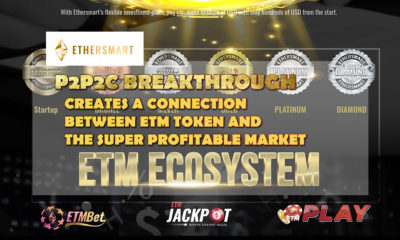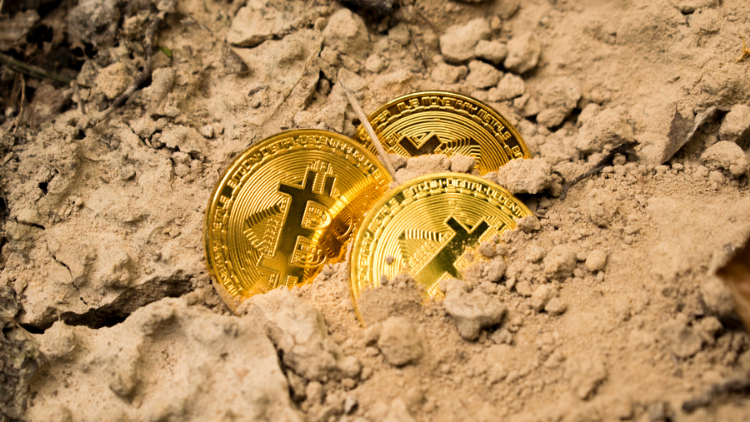Lazarus Group, a North Korean cybercrime syndicate, has recently orchestrated a massive $200 million cryptocurrency laundering operation using sophisticated techniques involving mixers and peer-to-peer (P2P) exchanges, thereby evading global tracking efforts.
This article delves into the methods used and their implications for cybersecurity.
In-depth Analysis of Lazarus Group’s $200M Laundering Scheme
Recent developments have implicated North Korea’s Lazarus Group in a massive $200 million cryptocurrency laundering operation.
The Scheme intricately utilized cryptocurrency mixers and P2P exchanges to obscure the origins of stolen funds, presenting significant challenges to global financial security and law enforcement.
Techniques Used in the $200M Crypto Laundering
The Role of Cryptocurrency Mixers
Cryptocurrency mixers, or tumblers, play a crucial role in the laundering process. These services blend potentially identifiable or “tainted” cryptocurrency funds with others, making it challenging to trace the funds back to their source. By breaking the link between initial deposits and final withdrawals, mixers provide a layer of anonymity essential for illicit activities.
Investigations reveal that the Lazarus Group channeled substantial amounts of stolen funds through several prominent mixing services, thereby complicating the tracing process.
How Mixers Complicate Tracking
Tracking funds through a mixer involves sophisticated blockchain forensic techniques that sometimes lead to dead ends.
Following the trail requires law enforcement and blockchain analytics firms to differentiate between legitimate and illegitimate payments, which is made more difficult by the volume and anonymity of transactions processed by these mixers.
Utilization of P2P Exchanges
Parallel to using mixers, the Lazarus Group also extensively utilized P2P exchanges. These platforms facilitate direct transactions between users without a centralized authority, offering additional layers of anonymity. By conducting transactions on these platforms, often under fake identities, the group managed to convert mixed cryptocurrencies into new, less traceable forms.
Features of P2P Exchanges Anonymity
The inherent design of P2P exchanges emphasizes user privacy and minimal oversight, which benefits cybercriminals. These platforms often do not require extensive identity verification, allowing users to maintain high levels of anonymity.
Noones and Paxful were the Bitcoin P2P exchanges that were mainly used by Lazarus Group.
The infamous Lazarus Group has been identified as the orchestrator behind several high-profile cryptocurrency breaches in recent years. The FBI has linked the group to the $41 million attack on Stake.com, a gaming firm, as well as the $622 million exploit of the Ronin Bridge. In total, the group has amassed over $2 billion in stolen digital assets from its various heists.
With the help of industry leaders such as crypto exchange Binance and top Ethereum wallet MetaMask, ZachXBT has pinpointed multiple accounts believed to be connected to the Lazarus Group. These accounts allegedly received $44 million from Lazarus-led hacks and successfully laundered the stolen funds into fiat currency.
Challenges in Tracking Laundered Cryptocurrencies
The combined use of cryptocurrency mixers and P2P exchanges presents formidable challenges for law enforcement and blockchain forensic experts.
Tracking the origins of funds becomes exponentially more complex as these technologies effectively break the links between the initial deposits and their final withdrawals.
The sophistication of the Lazarus Group’s strategies highlights the ongoing arms race in digital forensics, necessitating advancements in investigative techniques to keep pace with such elusive cybercriminal tactics.
It underscores the need for international cooperation and stronger regulatory frameworks to monitor and control these decentralized platforms.
Global Impact and Response
The global response to the Lazarus Group’s laundering operation has been one of alarm and mobilization.
International Reactions to the Laundering Operation
Recognizing the need for a coordinated effort to combat the misuse of cryptocurrency platforms, governments, and international bodies have begun tightening regulations on digital currency exchanges to enforce compliance with anti-money laundering (AML) standards and know-your-customer (KYC) protocols.
The incident has catalyzed discussions at various global forums, focusing on enhancing the regulatory framework around cryptocurrencies.
These measures aim to decrease the anonymity associated with crypto transactions, making it harder for groups like Lazarus to exploit these platforms for illicit purposes.
Changes in Cryptocurrency Regulation Post-Lazarus Group
Post-Lazarus, the regulatory landscape is seeing significant shifts. Jurisdictions that previously adopted a laissez-faire approach to cryptocurrency regulation are reconsidering their stance.
The focus has increasingly turned towards ensuring that exchanges and other crypto services adhere strictly to international AML guidelines. For instance, enhanced monitoring of suspicious transactions and the implementation of advanced tracking systems are being discussed as imperative steps to prevent similar incidents.
This incident has underscored the importance of global cooperation in the realm of financial technology. By sharing intelligence and aligning regulatory frameworks, countries can better prevent the flow of illicit funds through digital channels.
Technological Countermeasures
The field of cryptocurrency forensics is rapidly advancing, keeping pace with the complex strategies employed by cybercriminals like the Lazarus Group.
Advances in Crypto-Forensic Tools
The field of cryptocurrency forensics is rapidly advancing, keeping pace with the complex strategies employed by cybercriminals like the Lazarus Group.
Recent developments have emphasized the importance of sophisticated forensic technologies that can trace and identify illicit cryptographic activities more effectively.
Forensic specialists use a variety of techniques to track stolen or laundered cryptocurrency.
These include pattern analysis, which scrutinizes the transaction patterns on the blockchain to identify suspicious activities, and address clustering, where related addresses are analyzed to determine connections between different transactions that may seem unrelated at first glance.
Another critical technique is transaction tracing. Every transaction recorded on the blockchain can be examined to follow the path of funds as they move through various wallets and exchanges.
This method is crucial for mapping the journey of laundered money and potentially freezing involved assets to hinder further illicit activities, according to CNC Intelligence.
Enhancing Exchange Security Protocols
Beyond tracing and analysis, the role of exchanges has become increasingly pivotal in combating cryptocurrency crimes.
Exchanges are now integrating more robust KYC (Know Your Customer) and AML (Anti-Money Laundering) regulations to prevent the misuse of their platforms.
Per BDO, this includes real-time monitoring solutions provided by partnerships with blockchain analytics companies, which help identify and report suspicious transactions as they occur.
The evolution of blockchain forensics not only aids in immediate crime detection and prevention but also plays a significant role in shaping regulatory approaches toward cryptocurrency worldwide.
The collaboration between forensic experts, regulatory bodies, and financial institutions is crucial for developing a secure and transparent crypto ecosystem, as reported by CryptoGlobe.
Future Challenges and Strategies
As the cryptocurrency landscape continues to evolve, so does the sophistication of cyber threats.
Preparing for Future Cyber Threats in Crypto
The Lazarus Group’s recent activities underscore the ongoing need for the crypto industry to stay ahead of cybercriminals through innovation and enhanced security measures.
The industry faces the dual challenge of improving its defensive technologies while also educating users and regulators about the best practices for safeguarding digital assets.
Policy Recommendations for Enhanced Security
To combat future threats, policymakers and industry leaders must collaborate to create robust regulatory frameworks that balance security with innovation.
It is also vital to improve worldwide coordination between law enforcement and intelligence agencies.
To help stop possible security breaches before they occur, this involves exchanging best practices, information, and strategies for handling cyber threats.
The continuous refinement of blockchain forensics tools, coupled with proactive regulatory policies, will be pivotal in mitigating risks and ensuring the integrity of the cryptocurrency markets.
Conclusion and Summary
This investigation into the Lazarus Group’s activities highlights the ongoing arms race in digital forensics. It underscores the need for advanced tools and international cooperation to combat sophisticated forms of money laundering effectively.
FAQs
- What are cryptocurrency mixers, and how do they facilitate laundering? Cryptocurrency mixers combine various streams of potentially identifiable cryptocurrency to obscure the origin of funds, making it difficult to trace illegal activities.
- How do peer-to-peer (P2P) exchanges increase anonymity? P2P exchanges allow users to trade cryptocurrencies directly with each other without the need for a centralized authority, often requiring less personal information, thus enhancing anonymity.
- What blockchain forensic techniques are used to track laundered cryptocurrencies? Techniques include pattern analysis, address clustering, transaction tracing, and exchange analysis, which help in identifying and linking suspicious transactions to real-world identities.
- What role do regulations play in preventing cryptocurrency laundering? Regulations enforce stricter KYC and AML protocols on exchanges and other crypto services to reduce anonymity and increase the traceability of crypto transactions.
- How can individuals and organizations protect themselves against crypto laundering? Adopting best security practices, using reputable exchanges, and staying informed about the latest in cryptographic technology can mitigate the risk of falling victim to such schemes.




 Crypto2 years ago
Crypto2 years ago


 Blockchain4 years ago
Blockchain4 years ago


 Press Release4 years ago
Press Release4 years ago


 Press Release4 years ago
Press Release4 years ago


 Blockchain4 years ago
Blockchain4 years ago


 Press Release3 years ago
Press Release3 years ago


 Press Release4 years ago
Press Release4 years ago


 Blockchain4 years ago
Blockchain4 years ago












